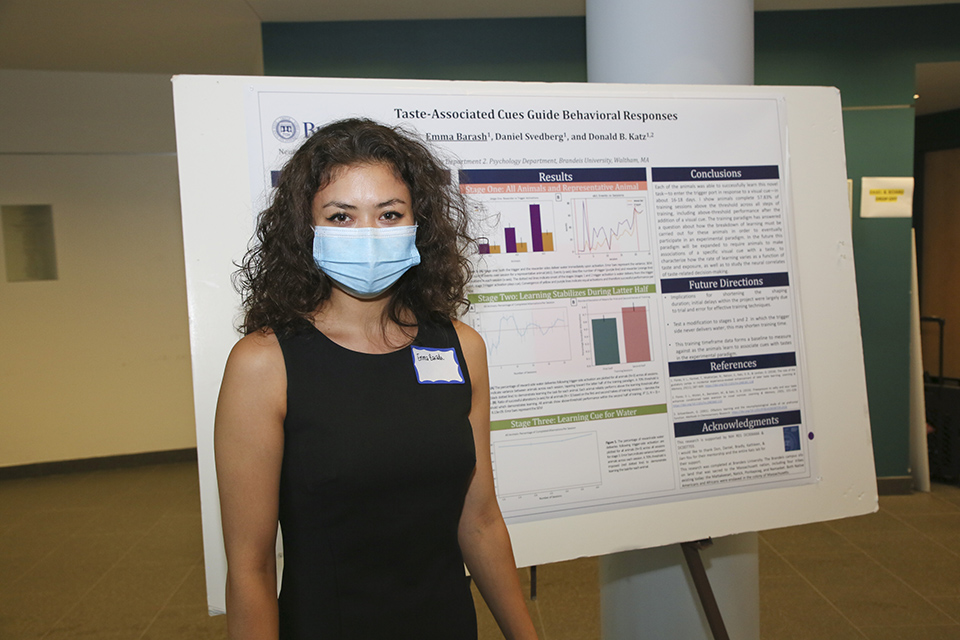Emma Barash
M.R. Bauer Foundation Summer Science Research Fellow
Katz Lab, Department of Psychology
Brandeis University

Taste-Associated Cues Guide Behavioral Responses
An animal’s survival is largely dependent on their ability to make split-second decisions about food; eating something toxic can lead to illness or death. For this reason, it is imperative to create specific associations with food in order to more easily identify safe and desirable foods (an animal forages for blue fruit associated with sweet, safe blueberries, but has learned to avoid bitter, red mushrooms). Over 10 weeks, I have designed and refined a novel training program in which rats learn to navigate a rig environment and activate a cue-trigger that arms a reward delivery port. Using sequential training stages in which animals must meet a 70% correct response criteria at each stage I have successfully trained 3 rats. In stage one, water-deprived animals learn to spend increasing amounts of time within the trigger port, incentivised by extending a water-delivery delay. Stage two extinguishes water rewards from the trigger port, and stage three introduces a screen which plays a cue for water. These data indicate that each of the animals were able to successfully learn this novel task to enter the trigger port in response to a visual cue in about 18 days. I show animals complete 58% of training sessions above the threshold across all steps of training, including above-threshold performance after the addition of a visual cue. This timeframe is an important baseline that will be important to measure against as the animals learn to associate cues with tastes in the experimental paradigm. There are also implications for shortening the shaping duration; initial delays within the project were largely due to trial and error for effective training techniques. The training paradigm has answered a question about how the breakdown of learning must be carried out for these animals in order to eventually participate in an experimental paradigm. In the future this paradigm will be expanded to require animals to make associations of a specific visual cue with a taste, to characterize how the rate of learning varies as a function of taste and exposure.
Personal Statement & Pandemic Reflection
Summer research as a Bauer Fellow has provided me with time to qualitatively visualize data and test methods that are continually increasing my efficiency in animal training. Receiving support to continue research during the summertime has allowed me to contemplate my project liberated from distraction and take advantage of a vacation-induced vacancy in the experimental room to perform necessary troubleshooting. Narrowing my focus has expedited data collection from multiple animals, as I am learning to be attentive to the myriad integrated parts of the experimental process.
The most recent semester included a layer of complications due to COVID-19 which protracted the build and setup time for my designed experiment because my access to facilities and tools was limited. I was also significantly delayed due to restricted time with a rig in the lab, which requires troubleshooting in order to ensure that the components are properly responding to my computer program.
Being a Bauer Fellow provided opportunities to give back in the form of training my peers to navigate the lab environment; I taught histology techniques that included the application of fluorescent stain and proper usage of the microtome. I also rebuilt the Katz Lab website and included current members and their research. The site may be used by prospective students who wish to gain insight into the Brandeis neuroscience program.